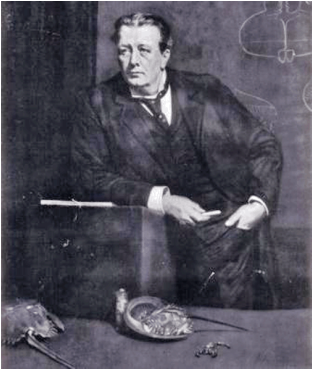|
Research in the my lab deals with the evolutionary morphology, biomechanics, behavior and systematics of arachnids and other arthropods. Much of our ongoing work focuses on the taxonomy, evolution and reproductive biology of leiobunine harvestmen (daddy longlegs) of eastern North America, but we have experience with a wide diversity of taxa and research problems, including the hydrodynamics of gill ventilation in mayfly naiads, mechanics of elastic sclerites and hydraulics in arachnid locomotion, molecular systematics of major arthropod groups, comparative anatomy of scorpions and many others. We are always looking for motivated graduate students who share our interest in the evolution and systematics of arthropods.
- Jeff Shultz [email protected] |
Lab News
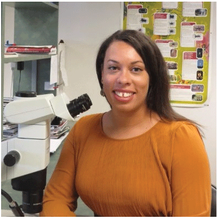
August 1, 2017
Hired!
Congratulations to lab alumna Dr. Mercedes Burns, who has joined the faculty of the Department of Biology at the University of Maryland - Baltimore County as an assistant professor. It's great that she has gainful employment in academia and even greater that she is just up the road.
Hired!
Congratulations to lab alumna Dr. Mercedes Burns, who has joined the faculty of the Department of Biology at the University of Maryland - Baltimore County as an assistant professor. It's great that she has gainful employment in academia and even greater that she is just up the road.
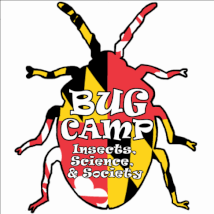
July 17, 2017
Bug Camp completes another successful summer!
Congratulations to Assistant Directors Grace Anderson and Kiley Gilbert for leading another great Bug Camp and introducing 48 campers to entomology. Thanks to SESYNC; the faculty, graduate students and staff of the Department of Entomology; and 4-H for making this possible.
Bug Camp completes another successful summer!
Congratulations to Assistant Directors Grace Anderson and Kiley Gilbert for leading another great Bug Camp and introducing 48 campers to entomology. Thanks to SESYNC; the faculty, graduate students and staff of the Department of Entomology; and 4-H for making this possible.
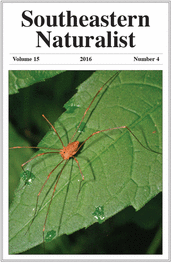
January 3, 2017
Jeff's photo of Leiobunum ventricosum on the cover of the latest issue of the Southeastern Naturalist
The photo is associated with the article
Draney ML, Shultz JW. 2016. The harvestmen (Opiliones) of the Savannah River Site, South Carolina. Southeastern Naturalist 15:595-612.
My name is misspelled in the photo credit, but, hey, you take it where you can get it. Am I right?
Jeff's photo of Leiobunum ventricosum on the cover of the latest issue of the Southeastern Naturalist
The photo is associated with the article
Draney ML, Shultz JW. 2016. The harvestmen (Opiliones) of the Savannah River Site, South Carolina. Southeastern Naturalist 15:595-612.
My name is misspelled in the photo credit, but, hey, you take it where you can get it. Am I right?

September 14, 2016
Narcissism update: Jeff discovers himself referenced in a YouTube video based on an email from ... 2012? Just so proud.o
From: Roxanne Palmer (April 04, 2012 4:10 PM). To: Charles Mitter. Subject: Press Inquiry
Hi there,
I’m writing a short article trying to answer a question that I’ve always wondered about: why do insects cross their legs when they die? Are there types of insects that don’t cross their legs when they die?
If you have any insights, or know someone else who would be good to talk to about this, please let me know!
Roxanne Palmer, Science Reporter, International Business Times
_______________________________________
From: Charles Mitter (April 04, 2012 5:00 PM). To: [email protected]. Subject: FW: Press Inquiry
anyone want to take a shot at this one?
________________________________________
From: Jeffrey W. Shultz (Wednesday, April 04, 2012 6:14 PM). To: [email protected]. Subject: FW: FW: Press Inquiry
I hypothesize that a lot of insects cross their legs when they dry, not when they die. The pliability of arthrodial membranes is associated with water in the soft cuticle. The cuticle contracts in dead insects upon drying. Thus, the joints flex. One prediction of this hypothesis would be that insects that die on the water do not cross their legs after they die. I suspect the reporter has observed long dead insects, not insects that have gone through the various stages of death... denial, anger, bargaining, etc. leading to mummification on the window sill.
My next NSF preproposal!
Narcissism update: Jeff discovers himself referenced in a YouTube video based on an email from ... 2012? Just so proud.o
From: Roxanne Palmer (April 04, 2012 4:10 PM). To: Charles Mitter. Subject: Press Inquiry
Hi there,
I’m writing a short article trying to answer a question that I’ve always wondered about: why do insects cross their legs when they die? Are there types of insects that don’t cross their legs when they die?
If you have any insights, or know someone else who would be good to talk to about this, please let me know!
Roxanne Palmer, Science Reporter, International Business Times
_______________________________________
From: Charles Mitter (April 04, 2012 5:00 PM). To: [email protected]. Subject: FW: Press Inquiry
anyone want to take a shot at this one?
________________________________________
From: Jeffrey W. Shultz (Wednesday, April 04, 2012 6:14 PM). To: [email protected]. Subject: FW: FW: Press Inquiry
I hypothesize that a lot of insects cross their legs when they dry, not when they die. The pliability of arthrodial membranes is associated with water in the soft cuticle. The cuticle contracts in dead insects upon drying. Thus, the joints flex. One prediction of this hypothesis would be that insects that die on the water do not cross their legs after they die. I suspect the reporter has observed long dead insects, not insects that have gone through the various stages of death... denial, anger, bargaining, etc. leading to mummification on the window sill.
My next NSF preproposal!
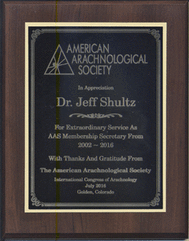
August 1, 2016
Jeff steps down as Membership Secretary of the American Arachnological Society after 14 years of service.
It was real and it was fun, but it wasn't real fun.
Visit the website of the American Arachnological Society!
Jeff steps down as Membership Secretary of the American Arachnological Society after 14 years of service.
It was real and it was fun, but it wasn't real fun.
Visit the website of the American Arachnological Society!
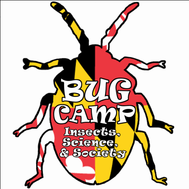
July 29, 2016
Bug Camp completes another successful summer!
Congratulations to Assistant Director Grace Anderson for leading another great Bug Camp and introducing 39 campers to entomology. Thanks to SESYNC; Camp Coordinator Julie Colatrella; the faculty, graduate students and staff of the Department of Entomology; and 4-H for making this possible.
Bug Camp completes another successful summer!
Congratulations to Assistant Director Grace Anderson for leading another great Bug Camp and introducing 39 campers to entomology. Thanks to SESYNC; Camp Coordinator Julie Colatrella; the faculty, graduate students and staff of the Department of Entomology; and 4-H for making this possible.
July 2 - July 9, 2016
20th International Congress of Arachnology, Boulder, Colorado
It was great to see so many arachno-friends at the ICA. Lots of great talks, events and field trips. There were cookies everywhere but not enough coffee. Still, it was great to see lab alum Mercedes Burns, who gave a great talk on the obligate and facultative parthenogenetic harvestmen of Japan. Jeff gave an invited talk on the functional morphology of arachnid leg joints in the symposium Locomotion and Kinematics: From Joints and Legs to Whole-body Performance. The meeting was the largest assemblage of arachnologists ever!
20th International Congress of Arachnology, Boulder, Colorado
It was great to see so many arachno-friends at the ICA. Lots of great talks, events and field trips. There were cookies everywhere but not enough coffee. Still, it was great to see lab alum Mercedes Burns, who gave a great talk on the obligate and facultative parthenogenetic harvestmen of Japan. Jeff gave an invited talk on the functional morphology of arachnid leg joints in the symposium Locomotion and Kinematics: From Joints and Legs to Whole-body Performance. The meeting was the largest assemblage of arachnologists ever!
